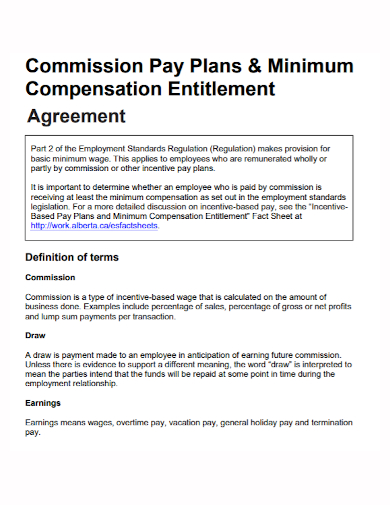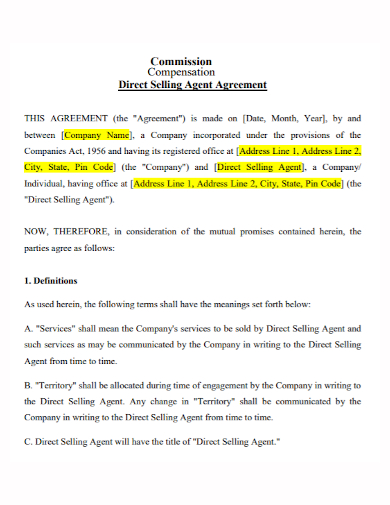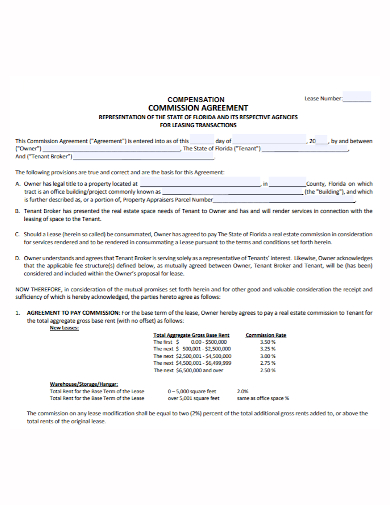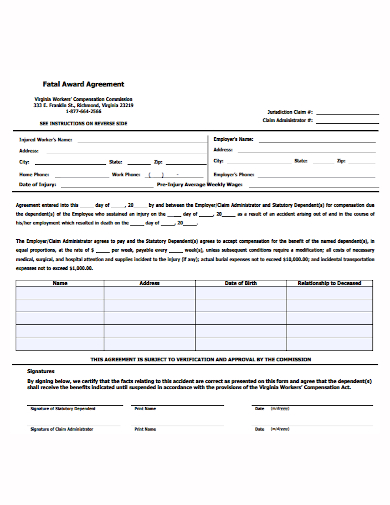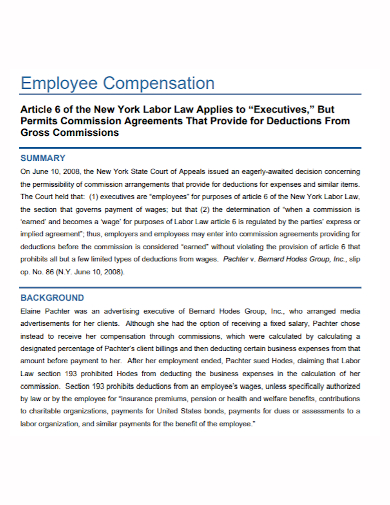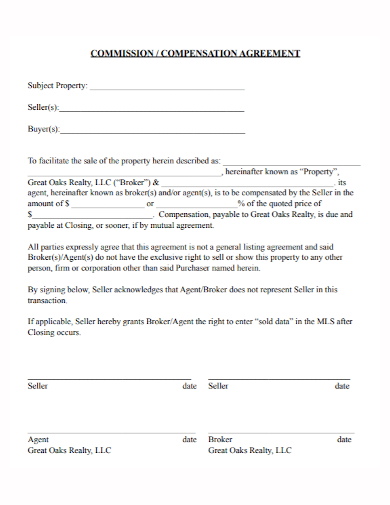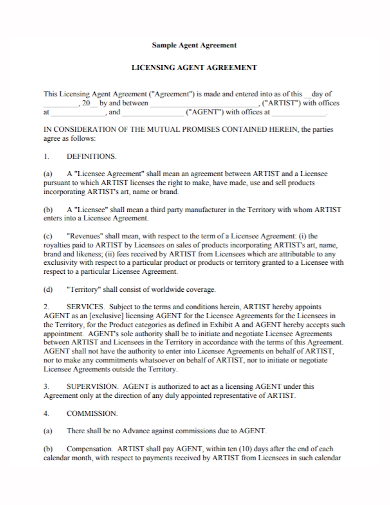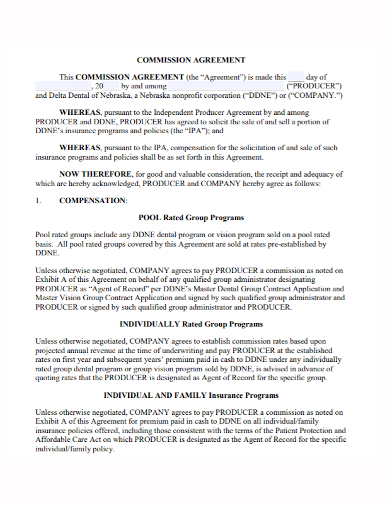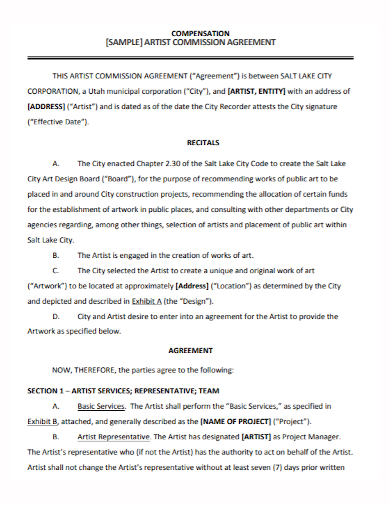Commissions are set and paid in a variety of ways by different companies. One method is a flat commission, in which the employee receives a rate or percentage of any sale made. The other option is to pay a ramping commission, in which the percentage grows as the employee makes more sales or meets greater goals. If you accept a job that pays on a commission basis, make sure you understand how the amount is calculated. Keep in mind that various things may effect your pay, so take time to completely study your job contract.
10+ Commission Compensation Agreement Samples
Commission refers to the pay paid to an employee after fulfilling a task, which is, frequently, selling a particular amount of products or services. It’s difficult to sell items or services. Sales and marketing professionals are up against stiff competition. Employers offer a commission to inspire their staff and improve production efficiency and generate more sales and attract clients. Commission-based income is common in sales and marketing roles in many industries, such as autos and real estate. It might be a part of an employee’s compensation or a distinct source of income received on a different timetable. It’s worked out as a proportion of overall sales.
1. Commission Compensation Agreement Template
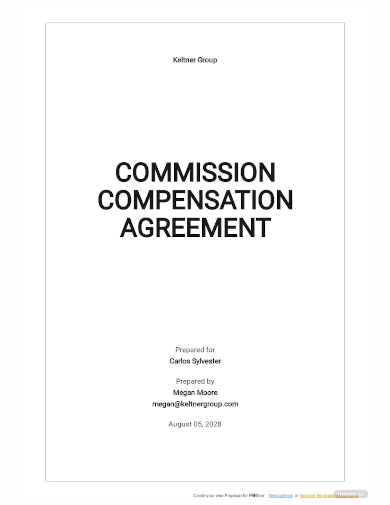
2. Commission Pay Compensation Agreement
3. Sales Commission Compensation Agreement
4. Commission Compensation Agent Agreement
5. Commission Compensation Lease Agreement
6. Workers Compensation Commission Agreement
7. Employee Commission Compensation Agreement
8. Property Commission Compensation Agreement
9. Commission Compensation License Agreement
10. Sample Commission Compensation Agreement
11. Artist Commission Compensation Agreement
Compensation Strategy
Developing a compensation strategy is critical for all businesses, even startups. The compensation approach must be cost-effective, well-structured, and competitive. Your compensation approach must be developed to best match your individual business conditions. You may not be able to compete on compensation with large corporations as a startup. As a result, to attract and keep essential staff, you need examine a variety of solutions. Do not undervalue the benefits or perquisites that your company provides that may not be available in larger companies—opportunities for fascinating work, absence of hierarchy, flexible workplace, and so on.
Some people are motivated by the ambition to be on the forefront of scientific or technical developments. They may take less salary to work for a company if they think in its future and the work it has to provide.
Benefits of Commission Pay
Many sales positions are compensated on a commission basis. This is because salespeople immediately contribute to the company’s revenue. The more sales the company makes, the more money it makes. The idea behind commission-based compensation is that salespeople will work harder to close deals if their income is contingent on it.
Paying based on commission is also a technique for corporations to keep payroll costs low, since the amount paid to sales reps is directly related to the quantity of revenue earned. This also implies that businesses aren’t wasting money on unproductive salespeople.
Employees (salespeople) are frequently compensated with commissions for ensuring the sale of a product or service. The goal is to provide a strong incentive for the individual to put forth the most effort possible in their work. Commissions are typically calculated as a percentage of the product or service’s sale price (for example, 5% of the retail sale value of a computer component).
Straight commission (no base salary) or a mixture of base salary and commission may be paid. In general, the commission system is based on meeting particular milestones or quotas that have been initially agreed upon by management and staff. These quotas or objectives are usually based on revenue, unit sales, or some other volume-based criterion.
FAQs
What are the types of commission?
There are two primary techniques to set commission. One is a flat commission. This is normally a percentage of any sale made by the representative, such as 5%. Businesses can also adopt a ramping commission structure, in which the proportion of compensation increases when salespeople meet particular goals.
What are the disadvantages of commission?
While a commission-based salary plan can allow some salespeople to make extremely high salaries, it also has several disadvantages. Salespeople who are paid on commission may be impatient to make a sale and spend less time describing items or services to potential customers as a result. Customers may become discouraged as a result, or they may purchase a product with which they are unhappy. Sales reps may earn more than anybody else in the firm in high-value sales, which can lead to resentment and discourage employees from working together as a team. If commissions are only paid out every few months, the sales force may only work hard until the last minute.
If you want to see more samples and formats, check out some commission compensation agreement samples and templates provided in the article for your reference.
Related Posts
FREE 10+ Mentoring Agreement Samples In MS Word | Apple Pages | PDF
FREE 10+ Partner Agreement Samples In MS Word | Google Docs | Apple Pages | PDF
FREE 10+ Individual Agreement Samples In MS Word | Google Docs | Apple Pages | PDF
FREE 10+ Strategic Agreement Samples In MS Word | Google Docs | Apple Pages | PDF
FREE 10+ Equity Agreement Samples In MS Word | Google Docs | Apple Pages | PDF
FREE 10+ Producer Agreement Samples in MS Word | Apple Pages | PDF
FREE 10+ Grant Agreement Samples In MS Word | Apple Pages | PDF
FREE 8+ Meeting Agreement Samples in MS Word | Google Docs | Apple Pages | PDF
FREE 10+ Community Agreement Samples In MS Word | Google Docs | PDF
FREE 8+ Real Estate Option Agreement Samples in MS Word | PDF
FREE 10+ Call Option Agreement Samples In MS Word | PDF
FREE 10+ Advertising Agreement Samples In MS Word | Google Docs | Apple Pages | PDF
FREE 10+ Car Agreement Samples In MS Word | Google Docs | Apple Pages | PDF
FREE 10+ Horse Agreement Samples In MS Word | Apple Pages | PDF
FREE 10+ Option Agreement Samples In MS Word | Google Docs | Apple Pages | PDF

